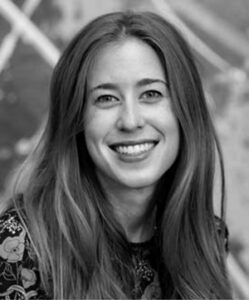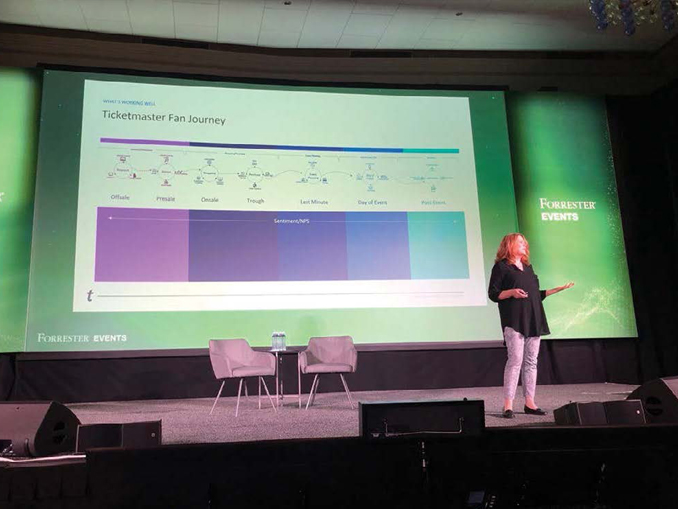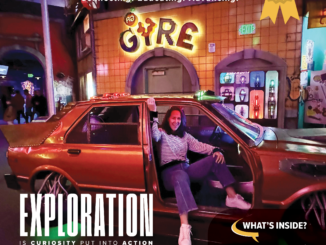 by Zoë Billington, User Research & Customer Insights, New York, New York, zbillington@gmail.com
by Zoë Billington, User Research & Customer Insights, New York, New York, zbillington@gmail.com
Kathryn Campbell, who currently heads up Global Integrity Research at Instagram, and I sat down to talk about her unique career in UX Research & Consumer Insights. We dived deeply on why silos tend to exist across research functions within an organization, and how researchers have the power to break down the barriers and unite them through our storytelling to create organizational change.
Zoë Billington: It’d be great to start off with a 1,000-foot view of your career. What led you to your current position leading Global Integrity Research at Instagram?

Kathryn Campbell: It’s a long and winding road. I actually started out in advertising, doing marketing research and brand positioning work. Then over time, as it became clear that the internet was fundamentally changing the nature of corporate communications, I became more interested in site and app design and how to use those communication vehicles, and then what makes them useful, usable, and desirable. That led to a gradual evolution over time into the technology and UX research space.
When I was at Ticketmaster, we were very concerned about account safety and people hacking your account to steal your tickets. That’s one area that prepared me for the job of a lifetime, which is trying to make one of the world’s largest social media platforms as safe and empowering as possible.
ZB: That’s a really great overview, thank you. You’ve talked about the depth of your research and insights experience in two fields—the first half in market research in advertising and the second half in UX research in tech. That’s quite an unusual combination. Can you help us understand why we don’t normally see leaders with this kind of depth across disciplines?
KC: It’s fascinating to me, because I have experienced companies where there are completely separate marketing research and UX research disciplines—and in some cases, they’re very combative. I think it’s an anachronism from where each discipline began.
Marketing research was either in the marketing department or within your ad agency partner, and was historically focused on understanding brand, both through quantitative and qualitative techniques, looking for the big themes that brought people together and motivated them to be engaged with a product or service.
UX research, which was originally called Human-Computer Interaction (HCI), then usability research, and we now refer to as UX research, was actually much more closely associated with engineering. It was used to avoid catastrophic mistakes in very high-stakes environments, and was more of an adjunct profession to ensure that products and environments were usable and safe under high stress. There were very few of these people; it was a highly specialized field.
But in the late ’90s, during the first big dot-com explosion, every company in the world suddenly realized that they needed to have a website or later an app. So, what has now become the UX research field exploded along with it. You had just exponential growth in that field, but again, more closely associated with engineering and the safety and usability of products.
Today, you have companies that have two distinct research departments, with different languages and different focuses and somewhat different methodologies. They could each borrow some of those methodologies and use them more liberally to broaden the overall insights and end up in a situation where you have a single integrated Insights Center of Excellence. That’s my ultimate view of what offers the most value to an organization. But, long story short, it’s not that the techniques were incompatible, or that you can’t learn something from each other. They just started in different places.
ZB: I like the way you summed up the general approaches of these two disciplines by focusing on the types of questions they ask: more perception-based questions and more behavioral questions. Could you talk through a business example that illustrates why both types of questions are needed to answer a business question, and how you achieved some kind of compatibility between them?
KC: Yes. I think you see this come up a lot in industries where the brand relationship is a really intrinsic part of the user experience. One industry where I’ve dealt with this is automotive. I worked on a project to redesign this auto manufacturer’s website, and it was a shared oversight project: the marketing department and the ad agency had final say over the website, but the engineering group’s project management team got to make sure that everything was feasible and took over responsibility for performance and all those things. So, it was one of these places where the two worlds of perception and behavior intersected.
A new vehicle is a very expensive purchase, and most people go through at least somewhat of a rational process to evaluate what kind of vehicle they want, and what features they want on it. However, if that’s all you focus on, then you end up with a site or an app that’s not very engaging to buyers. Because the reality is, automobiles are a highly projective purchase. It involves many considerations like, “what does this mean about my status in life, about how adventurous I am, about where I am in terms of my family lifecycle?”
There were a lot of important things that we gleaned from market research in terms of psychographics, like how fun-loving or adventurous people were, that helped to predict which vehicles they would be most interested in. This made the website experience much more engaging because people could see that reflected in the site itself. We used to joke that the Build Your Own tool—which is the part of the site where you get to add and change things like the trim level, wheels, and colors that you want—became like a video game for people because they found it so compelling.
ZB: Thanks for sharing that example—I think it’s a great illustration of why marketing research and UX research shouldn’t be kept in silos. Easier said than done for some organizations, though—right? Can you talk more about how, organizationally, you achieve this?
KC: My vision has evolved to thinking of our understanding of our customers as more of a mosaic. So, I would say, yes, it is usability or UX research. Yes, it is market research. But it should also be informed by our customer support center statistics, it should be informed by our marketing analytics or data science group that is looking at site statistics and running A/B tests, and it should be informed by our social media listening group. You need to create these communication channels between teams that allow us to freely share information between each other and to use these different vantage points to build stories for senior executives. I think this might flow into the whole point about how to think about this in terms of bridging different frameworks.
ZB: Assuming all of these teams have their own individual data streams and measures of success, how do you and your research team add value on top of all that?
KC: It’s becoming increasingly important, particularly as UX research is getting a bigger seat at the table, to learn and utilize the language of business.
UX researchers may come from a research background. They may come from a design background, but relatively few of them have an MBA, and relatively few of them really know how to think about or express user experience problems in dollars and cents terms. But it’s extraordinarily valuable on those occasions when you can do it. As one of my professors said when I was getting my MBA, “Accounting is the language of business.” So, when you make friends with the tech support or call center colleagues, and you can get them to estimate the kind of impact a problem had in terms of hours or call volume, those metrics are really valuable, rare data points.
That just takes shifting your perspective as a researcher: to realize that you are part of an ecosystem where, in theory, we all have the same goals, we all have the goal of getting market share, getting more customers, retaining our customers, and reducing the costs associated with servicing them without diminishing the quality of what we’re delivering. But it really is the difference between an entry-level person and a more senior person to be able to recognize how to frame those issues in a way that it doesn’t just seem like a nice to have—like, oh, the user would be more happy if we did this—but to put it in terms that senior executives are held accountable for and therefore will be more responsive to.
The last thing I’ll say is that I’ve come to the realization that at the end of the day, what we’re really trying to accomplish as user experience professionals is organizational change. We want to help the entire organization better understand who our users are, what they want, and how to fulfill those needs.
Every part of the organization is doing that in some way, right? But we can be the storytellers. We can be the ones who help make it a little bit clearer what direction we should be pointed in. So, as you move up in your career, learning how to effect organizational change becomes a key skill set.
The great upside of that is it up-levels the meaningfulness of what you’re doing together. That’s actually a key component of employee satisfaction and retention: feeling that the work that you’re doing is meaningful. The more people you get pulling in the same direction, recognizing the same user challenges and wanting to solve them together, the more meaning you create in that process.
ZB: We’ve talked a lot about making organizational change from the inside. I was wondering if you have any advice for the consultant who is coming into an organization and may not be privy to all this information, or have the ability to build these cross-functional relationships over time?
KC: Definitely. As a consultant or freelancer, you can be the connector, right? You know, an organization has its silos, and people get embedded in their teams. But, as an outsider, you can be the person who requests information from multiple areas that might not be used to talking to each other.
You can be the person who pulls it all together and demonstrates the bigger picture. Frequently, that’s the first time that your client or team will have that perspective. So, in some ways, it’s almost easier to shake things up and show people how interconnected these different facts are when you’re coming in from the outside. That’s a large part of what management consultants do: request all this information from all these different parts of the company, and then pull it together in a new way.
ZB: That’s great advice, and a great note to end on. Thank you, Kathryn!




